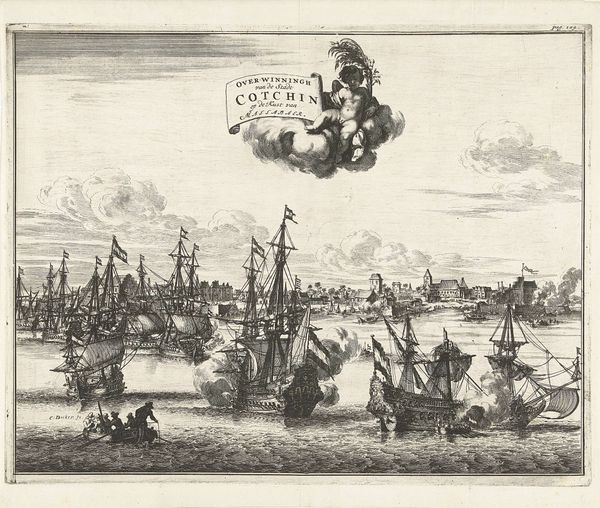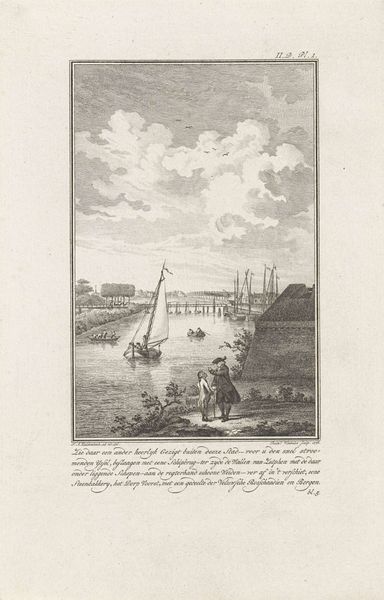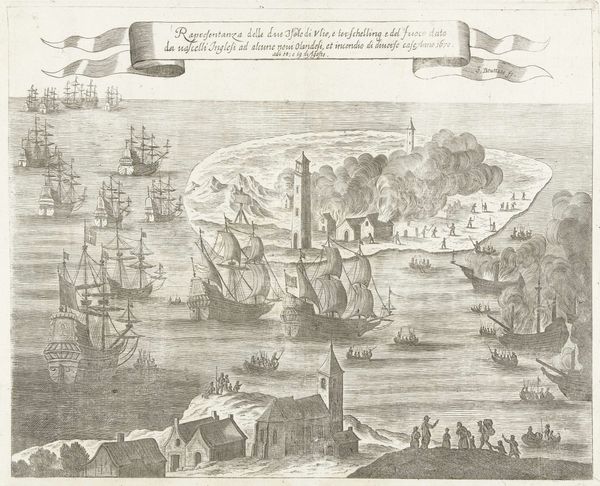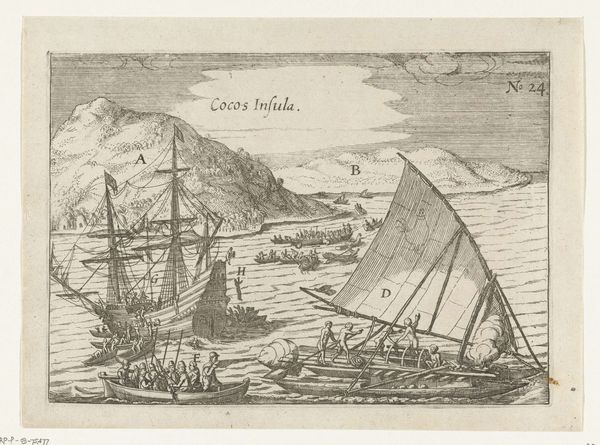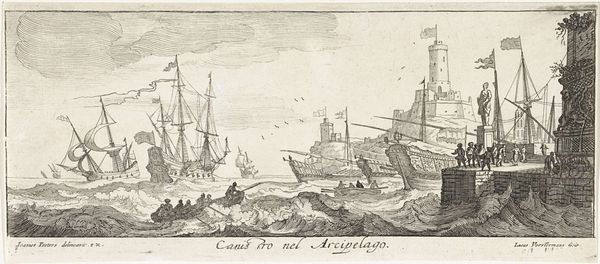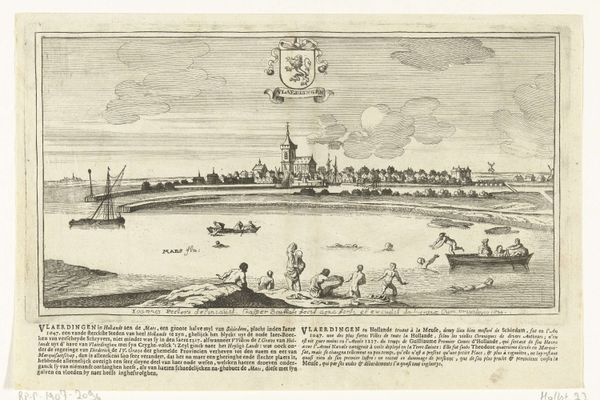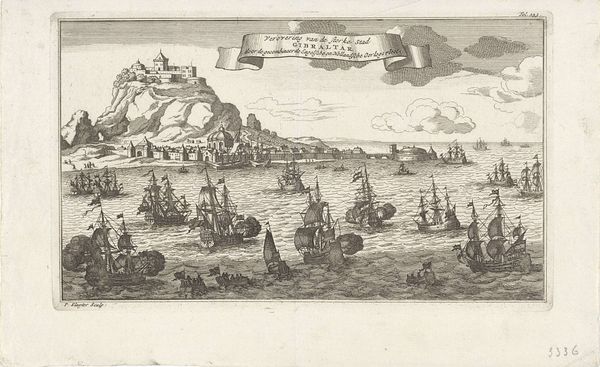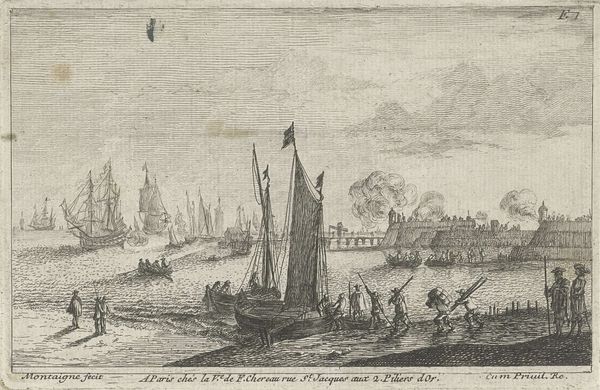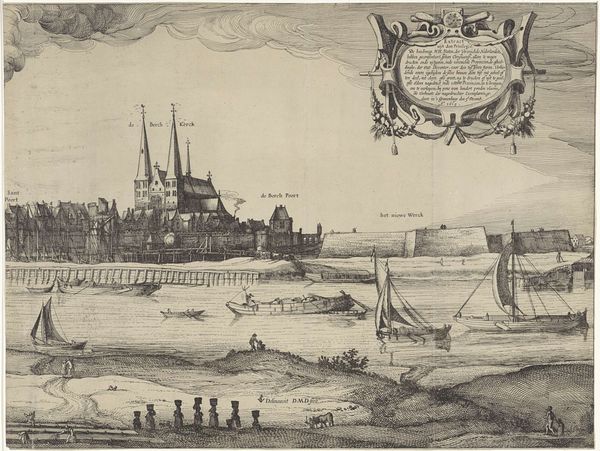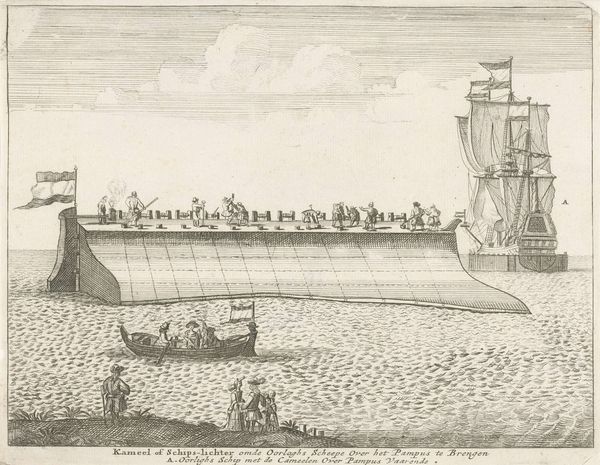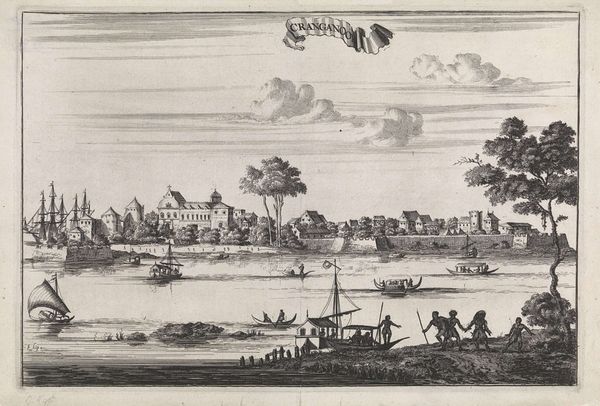
print, engraving
#
dutch-golden-age
# print
#
landscape
#
line
#
cityscape
#
engraving
Dimensions: height 426 mm, width 478 mm
Copyright: Rijks Museum: Open Domain
Curator: Immediately, I feel a deep sense of space and almost eerie tranquility, like gazing into the past through a monochrome window. The ships appear ghostlike; the absence of color amplifies their haunting presence, and it makes me wonder what these seas have seen, this coastline observed. Editor: What you're feeling resonates with the essence of Dutch Golden Age landscapes. This engraving, "Gezicht op Batavia (linker blad)," roughly translates to “View of Batavia, left leaf”, depicting the city of Batavia, modern day Jakarta, during the period from 1619-1680. Curator: Jakarta… that is what it brings to mind in ways; and Batavia was so key to trade routes and commerce—a world far removed, made visible in painstaking detail through these thin engraved lines, that is. Editor: Consider those details. The line work— so precise it almost feels photographic despite the time period. Those meticulous engravings echo Dutch mastery over depiction itself, mapping not just geography but also dominance and influence. Look how prominent the heraldry is. What does it say to you? Curator: Well, those rampant lions are clearly signaling power. The image of holding the sword seems to speak to territoriality, control, or conquest—which I suppose shouldn’t surprise anyone given the fraught history here. I keep going back to that ship on the left, with its little puff of smoke like a toy or maybe it's the implication of cannons—of dominance made visually palatable for a European audience. Editor: Absolutely. The smoke may also serve as a deliberate mark or warning, not just power but also possible conflict; in an otherwise orderly and commercial portrait. It certainly adds tension to what might be regarded as an exercise in documentation alone. The choice to depict such scenes surely helped frame perceptions of colonialism. Curator: Precisely, like creating cultural assumptions through seemingly simple pictorial imagery; an agenda beneath the delicate line work; and just shows us how complex that historical context truly proves once considered further in present understanding of art. This piece provides us a reflective window and a caution note from a colonial mirror. Editor: Indeed. Art as both artifact and active agent, a storyteller capable of shaping narratives far beyond its original intention; well put.
Comments
No comments
Be the first to comment and join the conversation on the ultimate creative platform.

